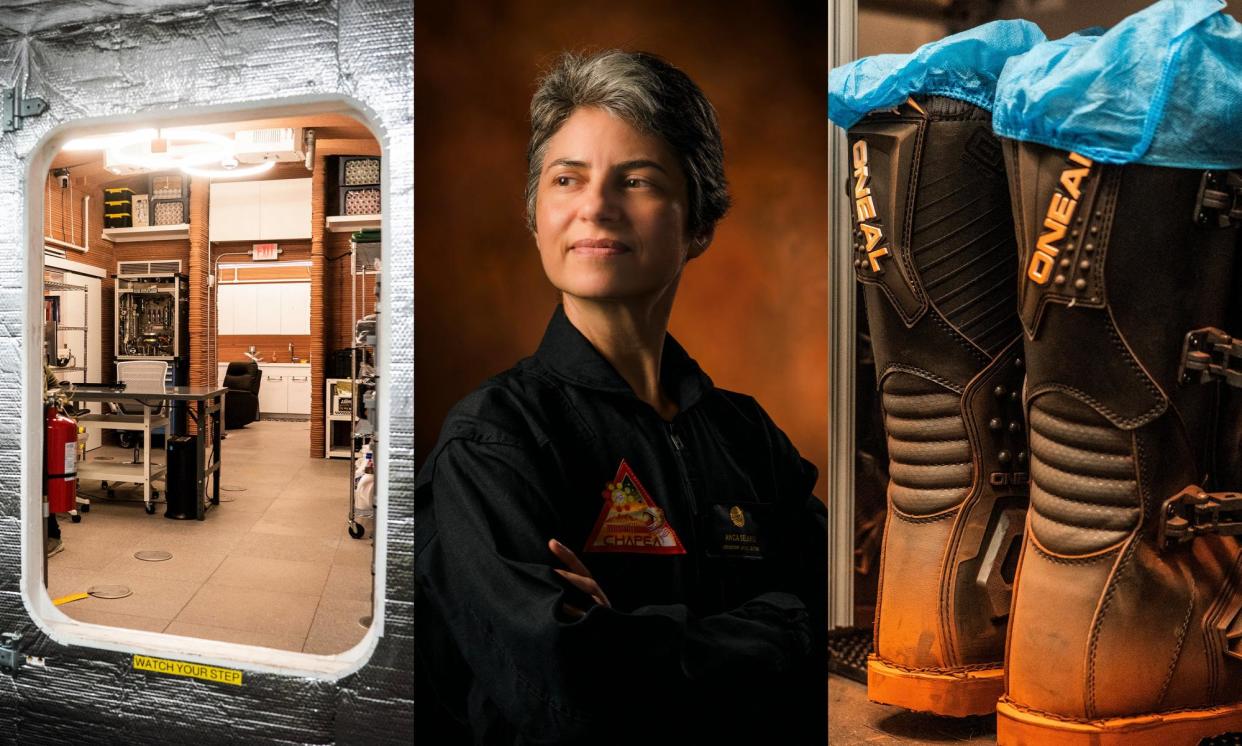Life on Mars ‘absolutely exhilarating’: Nasa scientist’s year in a simulation

Ask Anca Selariu what it was like living on Mars for a year, and there is no hesitation in her answer: “absolutely exhilarating”.
The US navy microbiologist is one of four Nasa crew members who returned to Earth earlier this month after becoming the first humans to reside on the red planet, or at least the closest thing the US space agency currently has to it.
Selariu and her fellow explorers, all volunteers, spent 378 days isolated from the rest of humanity locked inside Mars Dune Alpha, a 1,700 sq ft 3D-printed habitat at Nasa’s Johnson Space Center in Houston. It was built to replicate the living conditions and challenges astronauts will ultimately face when they get to Mars, ambitiously scheduled for the late 2030s.
For Selariu, who already possessed what she calls a high interest in Mars and space exploration, her selection as science officer for such a groundbreaking and potentially consequential mission was worth every sacrifice, from missed holidays with friends and family, to just being able to wander outside for a breath of fresh air.
“Humans will be getting to Mars at some point in the future, and just the opportunity to participate in any way one can to help that happen, hopefully in our lifetimes, is beyond compare,” she said.
“I am truly in awe of everything, all the efforts that I’ve witnessed to make this dream a reality for all humans. And yes, I’ll be celebrating when we see the first step on Mars, knowing I contributed. It was an incredible honor and absolutely exhilarating.”
Parts of the mission known as Chapea 1 (crew health and performance exploration analog) could have been filmed for The Martian, the 2015 science-fiction blockbuster that chronicled Matt Damon’s desperate struggle for survival as an astronaut stranded on Mars following a catastrophic windstorm.
Like Damon’s character in seclusion 142m miles from home, the Chapea crew had no resupply flights they could rely on, and needed to grow crops including tomatoes and lettuce to supplement a year’s worth of freeze-dried meals packed in advance.
“To me personally, it was such a joy to see and touch a living, green thing, because that is something that you miss the most while you’re away from Earth,” Selariu said, explaining how, in the isolation of deep space, even something as rudimentary as a lettuce leaf can provoke powerful feelings ranging from homesickness to existential self-questioning.
“My connection to Earth, and the deep feeling of being a true Earthling, a living entity from the planet Earth, you really feel it very deeply into your core and you really understand what that means and how incredibly important that connection really is,” she said.
Additionally, mission managers would regularly test the crew for their reactions to simulated emergencies and stressors, including intensive workloads, equipment failures and resource limitations.
The interplanetary lab rats, Selariu said, passed with flying colors.
“The study integrates all sorts of data from the behavioral and team dynamic perspective, and the question was not necessarily can a human withstand isolation and confinement as will be found on Mars, but rather, ‘how we will adjust?’” she said.
“We were an incredibly functional crew and very cohesive, and there were many moments that we cherished together. Of course, sometimes you realize you’re not around friends and family, but you do feel the support from everybody on the ground.”
Applicants for the first of three planned Chapea missions (the second begins next spring) were required to hold an advanced degree in science, technology, engineering or math, and complete training similar to that of a flight-ready Nasa astronaut if chosen.
Selariu, a Romania-born member of the US naval medical research unit, brought expertise in vaccines, gene therapy and infectious disease, skills that will be essential to maintaining the health of astronauts a minimum seven- to nine-month journey from medical facilities on Earth.
She said one of the most challenging aspects of the mission was communication with ground control because every message in or out was delayed 22 minutes to replicate its journey through space.
“Having to carry out a conversation across 45 minutes back and forth means you really have to think ahead and formulate the communication clearly and thoroughly,” she said. “It’s actually very hard to internalize.”
Nasa constructed Mars Dune Alpha to be as realistic as possible to a potential future base for astronauts. There is a greenhouse, medical area, exercise equipment and a lounge, as well as a small private bedroom for each of the volunteers, two bathrooms and a small “outdoor” enclosure with red sand underfoot for simulated Mars walks.
Much of the color-scheming of the habitat is also red, to replicate how martian soil will be used in 3D printing substantial sections of the base onsite as opposed to the near-impossible challenge and prohibitive cost of sending heavy construction components from Earth.
Even the crew’s downtime, which Selariu said featured “a lot of TV and reading downloaded”, and in her own case working on her drawing skills – “I cannot claim I’ve been successful,” she said – was monitored closely by managers keen to gauge the mental and behavioral health of humans engaged in long-duration spaceflight.
“The Chapea missions are critical to developing the knowledge and tools needed for humans to one day live and work on the red planet,” Bill Nelson, the Nasa administrator and a former space shuttle astronaut, said when the Chapea 1 crew emerged on 6 July.
Selariu said she has adjusted back to real life “pretty easily” in the two weeks since but would volunteer to go back inside in a heartbeat.
“I am grateful I had the opportunity to be part of this human hope to get to Mars, and to the next crew, I’ll be cheering you on and am super excited you get to continue this marvelous work,” she said.


